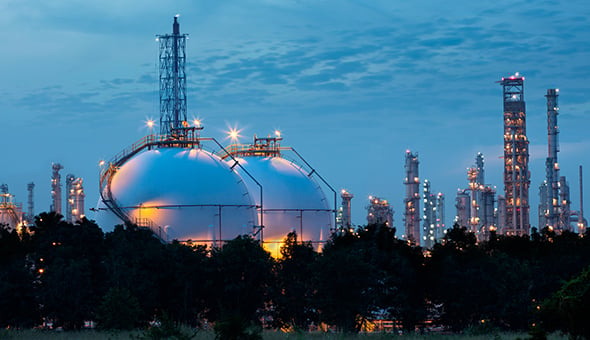Implementing circular economy in the energy and oil & gas industries
In a world where resources are increasingly scarce and environmental challenges are rising, the circular economy presents a powerful strategy for the energy, oil, and gas sector to combat carbon emissions and resource depletion. By embracing circular economy principles, companies can optimise resource use, extend material lifecycles, and minimise waste, enhancing operational efficiency and sustainability. Successful initiatives around the globe demonstrate how these strategies can reduce environmental impact while creating new business opportunities. To facilitate this transition, dss+ has developed a nine-step framework to assess circularity in O&G players, focusing on governance, procurement, operations, waste minimisation, and alternative revenue streams. Fostering a company culture that embraces these principles is crucial for effective implementation. As the industry evolves, adopting circular economy practices will be essential for driving sustainable growth and resilience.

Executive summary
Imagine a world where nothing goes to waste, where every product and material is cycled back into use for as long as possible. This is the essence of the circular economy – an innovative framework that redefines resource management and environmental stewardship.
For the energy, oil & gas sector, embracing circular economy principles is becoming increasingly crucial. With the industry facing significant challenges, such as carbon emissions and resource depletion, adopting circular practices offers a powerful solution. By extending the lifecycle of materials and repurposing waste, the sector can make progress towards its decarbonisation goals and enhance overall sustainability.
Globally, the energy and O&G industries are witnessing transformative circular economy initiatives. Successful examples from various regions demonstrate how these practices can drive efficiency, reduce environmental impact, and create new opportunities. As circular economy concepts gain traction worldwide, with notable advancements in Europe and growing adoption in Latin America, Africa, and the Asia-Pacific, the momentum for change is undeniable.
To support the integration of circular economy principles, dss+ has developed a specific framework to assess the circularity of O&G players. This includes a comprehensive
9-step approach to developing a circular economy strategy, focusing on key areas such as governance structure, procurement, operations, waste minimisation, and alternative revenue streams. Cultivating a company culture that supports these principles will be essential for driving successful implementation across the organisation.
The circular economy is more than a concept; it is a strategic imperative for the energy and O&G sector. By integrating these principles, companies can not only address pressing environmental issues but also unlock new pathways for growth and resilience.
Introduction to the circular economy
The circular economy – a definition
The concept of a circular economy is best understood by contrasting it with the prevailing economic model that has dominated since the industrial revolution. However, its drawbacks are becoming more apparent, impacting society, the environment, and businesses negatively.
The linear process of extracting raw materials, manufacturing products, using them often briefly, and then discarding them known as the take-make-use-dispose cycle - leads to several adverse outcomes:
- It depletes natural resources;
- It contributes to the accumulation of waste and environmental degredation, pollution of land, water, and air;
- It increases greenhouse gas emissions;
- It results in the loss of economic value since resources that could be reused or recycled are instead wasted.
In contrast with the linear, take-make-waste economic model, the circular economy is a vision of an economy where products and materials do not become waste after the first use. It is a vision of an economy where products and materials are kept in use for as long as possible; when they can no longer be used, they are turned into new products or materials instead of being disposed of in a landfill or, worse still, ending up in the environment.
According to the International Organisation for Standardisation (ISO), the circular economy is an economic system that uses a systemic approach to maintain a circular flow of resources, by recovering, retaining, or adding to their value, while contributing to sustainable development.
On 22 May 2024, ISO published a new suite of standards to aid the transition to the circular economy. The standards mark the first set of international definitions and rules for the circular economy. These newly published standards represent significant progress, providing a common understanding of the definition of circular economy, business operations according to the economic model, and its monitoring and evaluation. There are environmental and fiscal benefits to such an economy. Recovering and reusing materials and products over and over again can help secure the supply chain of main commodities, maximise economic value, and address resource scarcity and climate change. We are not close to realising this vision; by some estimates, less than 9% of the global economy is circular. However, there is global momentum behind waste prevention, fuelled by regulation, corporate activities, investments, and consumer demand.

The core principles of the circular economy
In many ways, the circular economy is part of ancient knowledge; it is how things have been done for thousands of years, until the industrial revolution.
However, its introduction to modern thought and practice is credited to a few individuals like Swiss architect Walter Stahel and organisations like the Ellen MacArthur Foundation.
According to the latter, a circular economy:
- Keeps products and materials in use;
- Eliminates waste, pollution, health risks and wildlife and habitat loss;
- Regenerates natural systems.
ISO 59004 categorises the actions that can contribute to a circular economy into the categories below. Figure 2 could also be construed as core aims of the circular economy.
The circular economy from strategy to action
The circular economy can play a fundamental role in decarbonising the economy and making sure the energy, O&G sector can meet its targets; most of the activities underpinning this approach have a net carbon benefit and can thus help companies to meet their decarbonisation objectives: utilising material from recyclates, instead of virgin sources can reduce up to 80% of the carbon content embedded in materials, like plastics.
A systemic approach is recommended to determine which circular economy interventions are best suited and most impactful for each company as well as to embed circularity into mainstream operations. To prioritise circular economy interventions, it is recommended that each company triangulates the solutions available based on a series of pre-defined criteria.
Effort for implementation
Maturity of technology in the region: this concerns the level of establishment or popularity of the technology so far, judged by the number of other companies utilising the technology for waste processing. Technologies that are lesser known or not widely tested will be rated lower than those already being successfully implemented across the region.
Level of interest: This is a more subjective assessment based on how eager or willing individual companies are to relocate. Keen companies gain a higher score.
Cost of technology
Processing at national, regional, international levels: to evaluate the commercial impact (either negative or positive) compared to current disposal expenses, the cost of treatment per ton or cubic metre.
Environmental assessment
CO2 emissions: IPCC2021 GWP100 - this approach is grounded in the definitive governmental release of the IPCCs ‘AR6 Climate Change 2021’ report, employing the Life Cycle Assessment (LCA) methodology specific to waste management.
Circularity Profile: defined according to the waste hierarchy, where the management scenario at the top of the hierarchy gains a higher score and should be prioritised compared to technologies that only seek to dispose or process for energy (bottom of the pyramid). Use of waste as a raw material in other processes achieves additional environmental benefits (and so a higher score) due to the avoidance of using raw materials.
How dss+ can help?
Many companies in the energy, O&G sector and beyond have yet to fully operationalise their circular economy pledges and strategies.
What follows is a dss+ stepwise process to transpose circular economy into action based on existing best practice.
In order for a circular economy strategy to be effective, it is essential that the circular economy is not viewed as a separate, isolated programme but is embedded into the company’s core processes and business decisions.
Examples of aspects that can be evaluated include how:
- To embed materials-related considerations in business strategy;
- Circular economy criteria can inform financial decisions (e.g.: investments, M&As);
- To embed circularity criteria in procurement decisions.